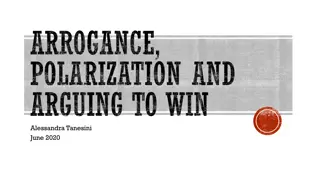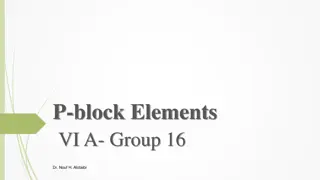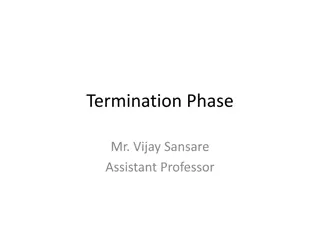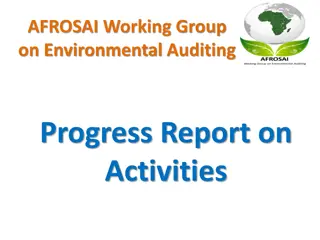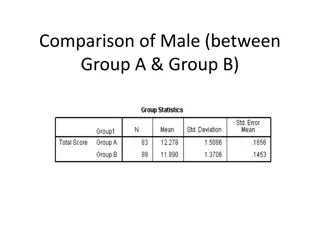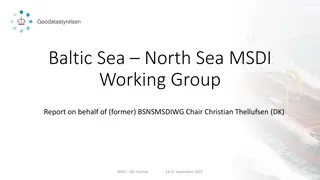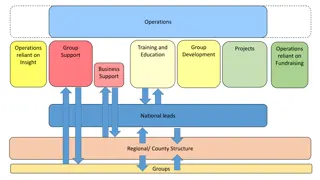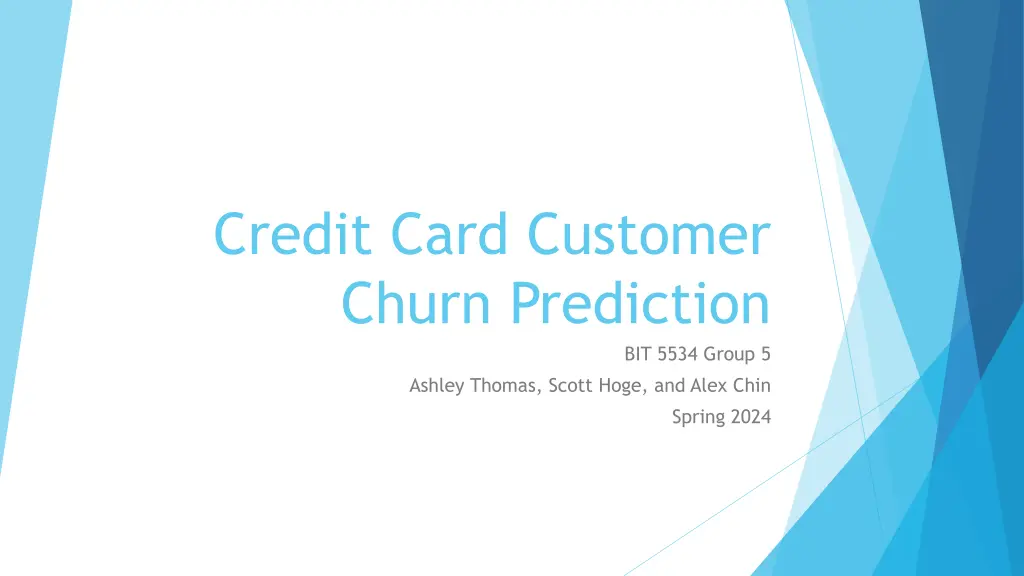
Credit Card Customer Churn Prediction Analysis
Explore a Credit Card Customer Churn Prediction project conducted by a group in Spring 2024, aiming to identify patterns in data to predict customer churn risk and intervene before losing customers. The project includes data sourcing, preprocessing, an initial logistic regression model, and principal component analysis to build a predictive model using 7 key components.
Download Presentation

Please find below an Image/Link to download the presentation.
The content on the website is provided AS IS for your information and personal use only. It may not be sold, licensed, or shared on other websites without obtaining consent from the author. If you encounter any issues during the download, it is possible that the publisher has removed the file from their server.
You are allowed to download the files provided on this website for personal or commercial use, subject to the condition that they are used lawfully. All files are the property of their respective owners.
The content on the website is provided AS IS for your information and personal use only. It may not be sold, licensed, or shared on other websites without obtaining consent from the author.
E N D
Presentation Transcript
Credit Card Customer Churn Prediction BIT 5534 Group 5 Ashley Thomas, Scott Hoge, and Alex Chin Spring 2024
Objective Our goal is to identify patterns in our data set that will allow us to predict which customers are at risk for discontinuing services (churn) at a credit card company. The hope is to understand the factors that contribute to customer dissatisfaction or disengagement prior so that we can intervene prior to losing that customer.
Data The dataset was sourced from Kaggle Credit Card customers (kaggle.com) 10,127 observations 19 independent variables Nominal, ordinal, discrete, and continuous data types Dependent variable Attrition_Flag is a binary categorical variable with values Existing Customer and Attrited Customer Customer demographics and credit card habits including age, gender, dependents, income, credit limit, etc.
Data Preprocessing Data was analyzed utilizing JMP Histograms, box and whisker plots, and scatter plots to visualize the data for easier identification of any significant patterns (i.e. outliers, skewness, correlation, etc.) Some of our variables are highly skewed and that could have a significant impact on our regression model s predictive ability Attrition_Flag, our target response variable, is a binary field with 1627 attritted customers (16.1%) and 8500 existing or retained customers (83.9%) Added a Validation column to support separate training and validation subsets 7595 observations in the training set and 2532 observations in the validation set
Initial Logistic Regression Model Our initial investigation model was a nominal logistic regression model and the fit details for that model resulted in an R2 of 0.4747 on the training set and 0.4604 on the validation set. The misclassification rate was 0.0927 and 0.1011 for the two sets, respectively. Logistic Regression 0.4747 0.2606 3549.7 3778.27 0.0927 N/A Measures R2 RASE AICc BIC Misclassification Rate AUC The logistic regression model was run to get a baseline on our data, to compare these results to the other data mining techniques. The overall results of this model were fairly underwhelming in looking at the key model metrics.
Principal Component Analysis The original data set included 19 independent variables, but since the principal component analysis (PCA) cannot be used with categorical variables, 6 of the independent variables were not included in this analysis. For the remaining 13 variables the PCA was performed with eigenvalues ranging from 2.5680 for the first principal component to 0.1677 for the last (thirteenth) principal component. The eigenvalues for principal components 2 through 7 range from 2.0452 to 0.9851 The first 7 principal components explain approximately 80% of the variation Our final conclusion was to build our model using 7 principal components.
Principal Component Analysis Logistic Regression We performed a logistic regression analysis that incorporated our 7 principal components AND our remaining categorical independent variables PCA - Logistic Regression R2 RASE AICc BIC Misclassification Rate AUC Measures 0.2872 0.3039 6415.44 6603.1 0.1178 N/A It does not appear that the PCA analysis would be a good fit for our data compared to the initial logistic regression model. This model performed significantly worse with an R2 of 0.2872, RASE of 0.3039, and a misclassification rate of 0.1178.
Neural Network Multiple neural network models were constructed, starting with the default model with 3 neurons in a single hidden layer. This model provided a good result with an R2 score of 0.6922, one of the better results seen to date. The RASE was 0.2362 and the model was able to accurately predict 96.6% of the existing customers and 69.7% of the attrited customers in the validation set, a misclassification rate of 0.0794. Additional models were created with 5 neurons in one hidden layer, 5 neurons in hidden layer 1 and 3 neurons in layer two, 5 neurons in two hidden layers, and 8 neurons in two hidden layers.
Neural Network Results Comparison Model # Layer 1 Nodes 3 5 5 5 8 Layer 2 Nodes - - 3 5 8 R2 RASE MAD Misclassification Rate 1 2 3 4 5 0.6922 0.7761 0.8296 0.8324 0.7802 0.2362 0.1992 0.1841 0.1791 0.1922 0.1070 0.0763 0.0639 0.0613 0.0638 0.0794 0.0541 0.0454 0.0430 0.0438 Note: R2, RASE, MAD and Misclassification are for the validation dataset Of the neural network models, model #4 with 5 hidden neurons on each of the two hidden layers provided the best results, with a R2 score of 0.8324. Model 5 with 8 neurons on the two hidden layers showed a reduced R2, potentially signaling overfitting, so further exploration was not performed.
Model Comparison Logistic Regression 0.4747 0.2606 3549.7 3778.27 0.0927 N/A PCA - Logistic Regression 0.2872 0.3039 6415.44 6603.1 0.1178 N/A Neural Network (3 neuron) 0.6922 0.2362 N/A N/A 0.0794 0.9634 Neural Network (5+5 neuron) 0.8324 0.1791 N/A N/A 0.0430 0.9905 Measures R2 RASE AICc BIC Misclassification Rate AUC Overall, we felt that the neural 5+5 model was the best performing model for our dataset. The neural 5+5 model training set was able to accurately predict 87% of the customers that eventually left the company and the accuracy of this model only declined slightly to 84% when run on the validation set.
Conclusions Logistic regression model was underwhelming in looking at the R2 (0.4747) and RASE (0.2606), and misclassification rate (0.0927). Principal component analysis performed significantly worse with an R2 of 0.2872, RASE of 0.3039, and a misclassification rate of 0.1178. Experimented with a several neural network models and noted that the highest performing one had 2 layers with 5 nodes in each layer (5+5 Model). R2 of 0.8324, RASE of 0.1791, and a misclassification rate of 0.0430. Neural 5+5 model was the best performing model for our dataset If we were able to accurately identify 84% of customers prior to leaving and we were able to retain 50% of those customers. This would result in a reduction of our current attrition rate of 16.1% to an attrition rate of 9.3% by retaining those additional 683 customers from our dataset. If we assume that the company gets 3% of all credit card transactions and collects 24.37% (current national average) interest on revolving credit card balances, then this would result in additional revenues of $90K and $194K on annual spend and revolving balance per customer, respectively.










